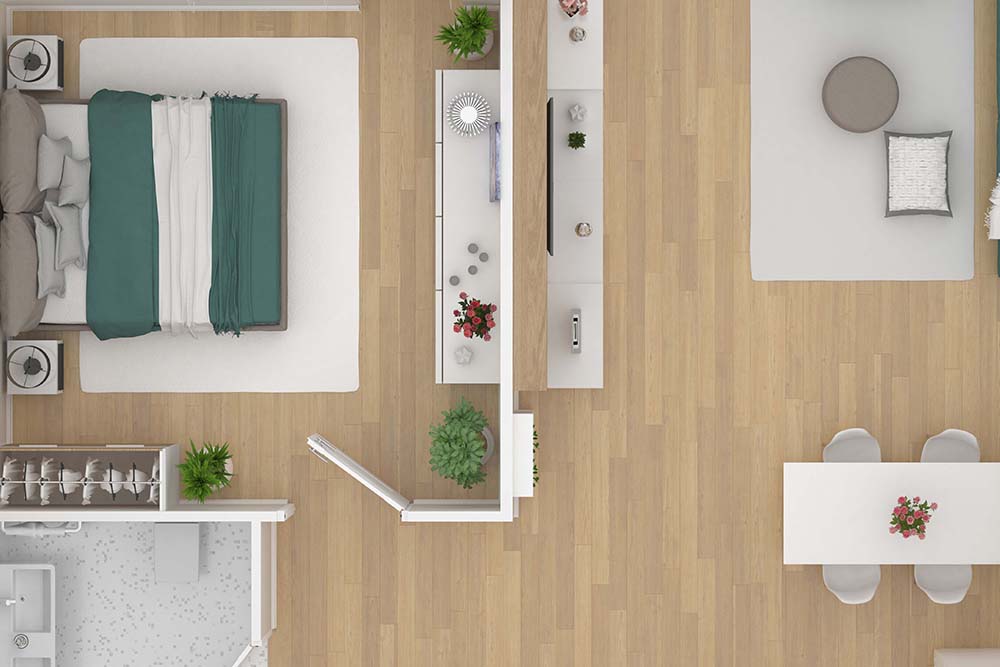
Dementia affects millions of people worldwide, bringing not only cognitive challenges but also difficulties in navigating and interpreting their surroundings. A thoughtfully designed environment can significantly improve the quality of life for individuals with dementia by enhancing their safety, comfort, and sense of independence. This blog post explores the crucial elements of environment and design for dementia care, offering insights into best practices and practical strategies for creating supportive spaces.
The Importance of Environment in Dementia Care
The environment plays a critical role in the well-being of people with dementia.
A well-designed space can:
Reduce Confusion and Anxiety: Clear and familiar environments help minimize confusion and anxiety, which are common in dementia.
Promote Independence: Design features that support easy navigation and daily activities can foster a sense of independence.
Enhance Safety: Safety features can prevent accidents and reduce the risk of wandering.
Support Cognitive Function: Stimulating environments can help maintain cognitive function and engagement.
Improve Quality of Life: Overall, a supportive environment enhances the quality of life, providing comfort and promoting emotional well-being.
Key Principles of Dementia-Friendly Design
Designing environments for people with dementia requires careful consideration of their unique needs and challenges.
Here are the key principles to guide the design process:
1. Simplicity and Clarity
Complex or cluttered environments can overwhelm individuals with dementia. Spaces should be simple, with a clear layout and minimal clutter. Key elements include:
Open Floor Plans: These help individuals see and access different areas easily.
Clear Signage: Use simple, easy-to-understand signs with large text and familiar symbols.
Unobstructed Pathways: Ensure pathways are free of obstacles to facilitate safe movement.
2. Familiarity and Comfort
Familiar environments can evoke a sense of comfort and security. Incorporate familiar objects, colors, and layouts that resonate with the individual’s past.
Key elements include:
Personalization: Allow for personal items and decorations that reflect the individual’s life history and preferences.
Home-Like Feel: Design spaces to feel homey rather than institutional, using familiar furnishings and décor.
3. Safety and Accessibility
Safety is paramount in dementia care. Design features should minimize hazards and support easy navigation.
Key elements include:
Non-Slip Flooring: Use flooring materials that reduce the risk of slips and falls.
Handrails and Grab Bars: Install these in hallways and bathrooms to support mobility.
Controlled Access: Secure areas that might pose a danger, such as kitchens or exits, to prevent wandering.
4. Calm and Soothing Environments
Stress and agitation are common in dementia. Create environments that promote calmness and relaxation.
Key elements include:
Soft Lighting: Use natural lighting where possible and avoid harsh, glaring lights.
Soothing Colors: Use a calming color palette with soft, muted tones.
Quiet Spaces: Designate quiet areas where individuals can retreat from noise and stimulation.
5. Sensory Stimulation
Engaging the senses can be beneficial for cognitive function and emotional well-being. Incorporate elements that stimulate the senses in positive ways.
Key elements include:
Gardens and Outdoor Spaces: These offer opportunities for sensory engagement with nature, including sights, sounds, and smells.
Textured Surfaces: Use varied textures in furniture and décor to provide tactile stimulation.
Music and Art: Incorporate music and visual arts to stimulate auditory and visual senses.
Practical Strategies for Creating Dementia-Friendly Environments
Implementing dementia-friendly design principles involves both large-scale modifications and small, thoughtful changes.
Here are some practical strategies:
1. Living Areas
Open Layouts: Arrange furniture to create clear, open spaces that are easy to navigate.
Familiar Objects: Include personal items like photos, favorite books, or familiar furniture pieces.
Comfortable Seating: Provide various seating options that are comfortable and supportive.
2. Bedrooms
Consistent Layout: Keep the layout of the room consistent to reduce confusion.
Personal Items: Allow for personal touches that make the space feel familiar and comforting.
Nightlights: Use soft nightlights to help individuals orient themselves if they wake up during the night.
3. Bathrooms
Clear Signage: Use clear signs to indicate the bathroom’s location.
Non-Slip Surfaces: Ensure all surfaces are non-slip to prevent falls.
Contrasting Colors: Use contrasting colors for fixtures and fittings to make them easily identifiable.
4. Kitchens
Safe Access: Control access to potentially dangerous appliances or tools.
Easy-to-Use Fixtures: Use fixtures and appliances that are easy to operate and understand.
Visible Storage: Open shelving or glass-fronted cabinets can help individuals see and find items easily.
5. Outdoor Spaces
Secure Perimeters: Ensure outdoor spaces are secure to prevent wandering.
Paths and Seating: Create clear paths with plenty of seating areas.
Sensory Gardens: Include plants with various colors, textures, and scents to engage the senses.
6. Common Areas
Clear Navigation: Use landmarks and clear signage to help individuals navigate.
Social Spaces: Create inviting areas that encourage social interaction and engagement.
Activity Areas: Designate spaces for activities such as crafts, games, or music therapy.
Technology in Dementia-Friendly Environments
Technology can enhance the environment for individuals with dementia, offering additional support and safety.
Here are some technological innovations to consider:
Smart Home Devices: Voice-activated assistants and smart home systems can help manage daily tasks and provide reminders.
GPS Tracking: Devices like wearable GPS trackers can help locate individuals who might wander.
Fall Detection Systems: These systems can automatically alert caregivers if a fall is detected.
Interactive Tablets: Tablets with specialized apps can provide cognitive stimulation and entertainment.
Challenges and Solutions
Designing dementia-friendly environments comes with its own set of challenges, but with careful planning and creativity, these can be overcome:
Budget Constraints: Implementing changes can be expensive. Prioritize essential modifications and explore funding options, such as grants or community programs.
Resistance to Change: Some individuals or institutions may resist changes. Educate stakeholders on the benefits and involve them in the design process to foster buy-in.
Balancing Safety and Independence: It can be challenging to balance safety measures with the need for independence. Aim for solutions that offer both, such as secure yet accessible spaces.
